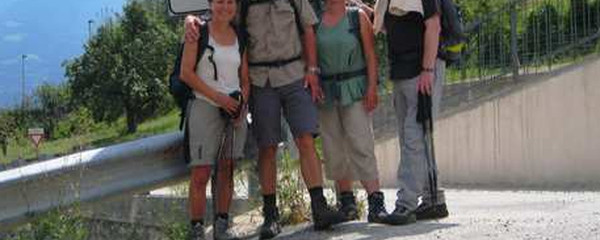Navigation

unterwegs nach Aosta

Smaragd-Eidechse am Wegrand
The Romans founded Aosta approximately 25 b.Chr, its name at the time was Augusta Praetoria and its mission was to control access to the alpine passes of Minor and Grand St-Bernard. Despite various plunderings and desctructions during the following centuries, many of the original buildings like the town wall, town gates, the triumphal arch as well as the roman theatre and the amphitheatre partly survived.

Blick von Torre di Gridnot auf Aosta
Also well worth seeing is the monastery church named San Pietro ed Orso, built around 1000 a.Chr. as a basilica in early romanesque style, and renewed 500 years later in gothic style.
Note(s)
The «Via Francigena» is one of the 3 main christian pilgrimage trails of the Middle Ages, the main axis leading from Canterbury to Rome. This documentation currently covers the most frequented section from Lausanne to Rome.
Anmerkungen
Die «Via Francigena» ist einer der 3 christlichen Pilgerwege des Mittelalters, dessen Hauptachse von Canterbury in England nach Rom führt. Diese Dokumentation umfasst vorerst den Abschnitt von Pontarlier nach Rom.
Orte entlang des Weges
Echevennoz - Montjoux - Gignod - Cré - Chez Henry - Chez Roncoz - Variney - Signayes - Aosta









